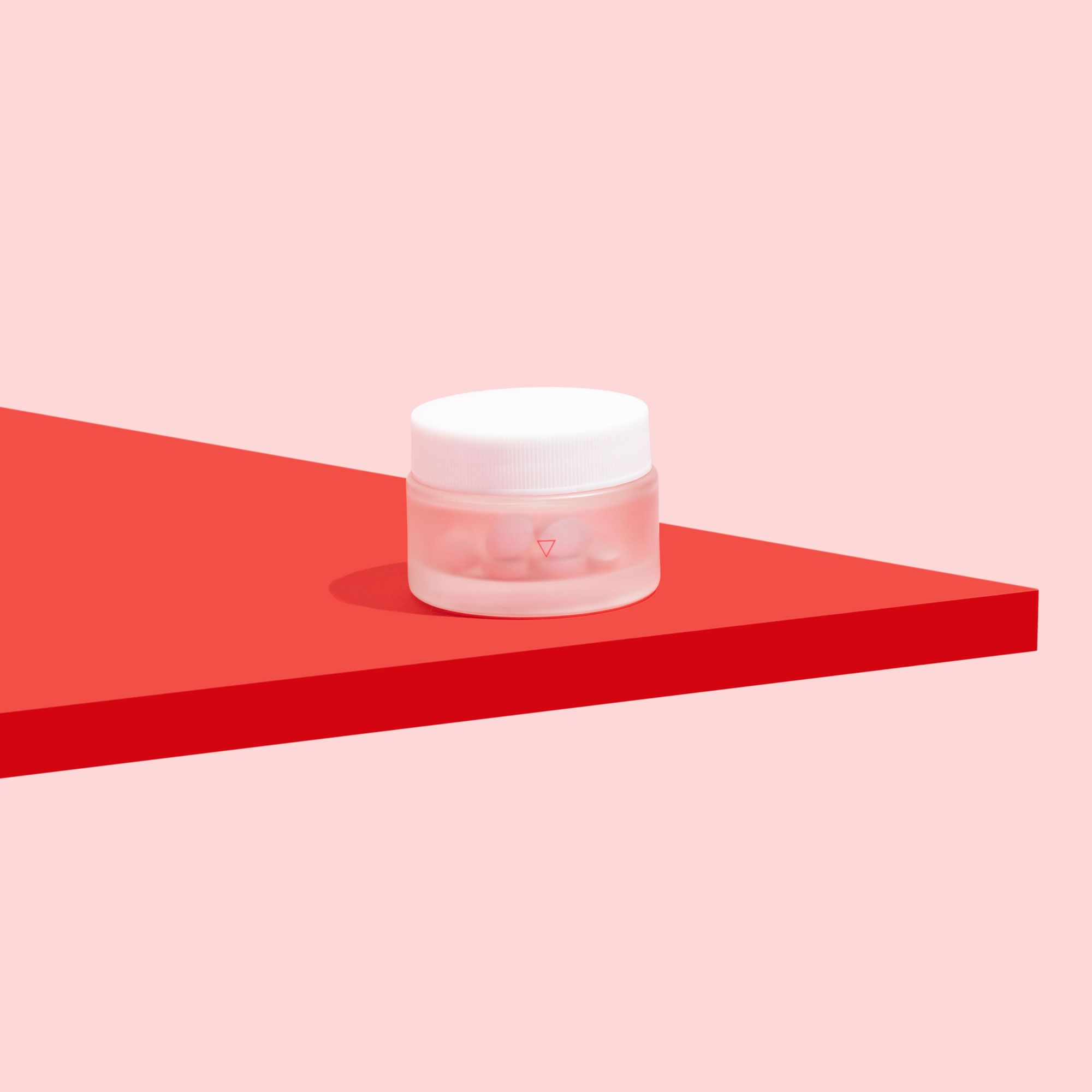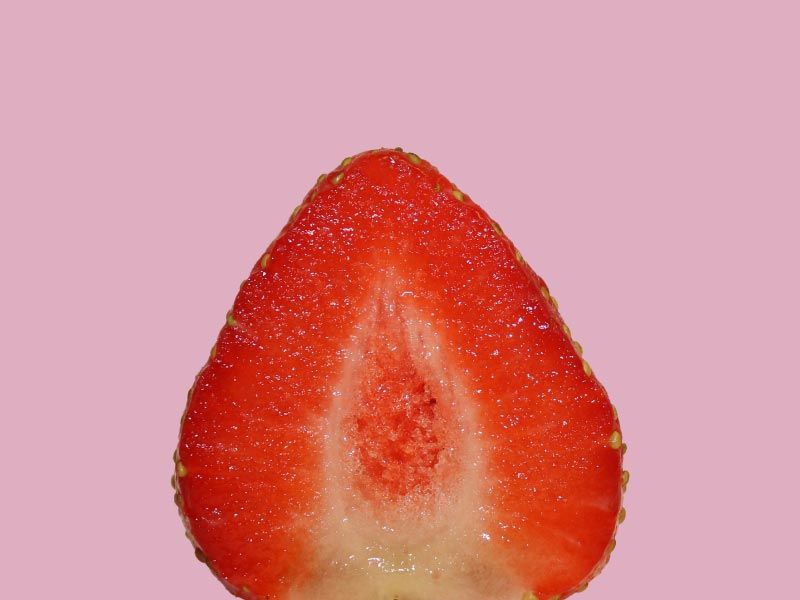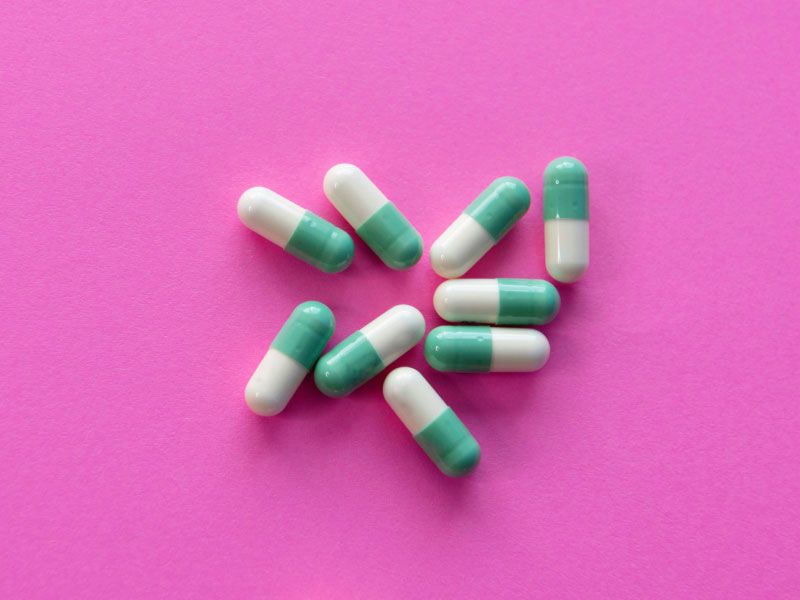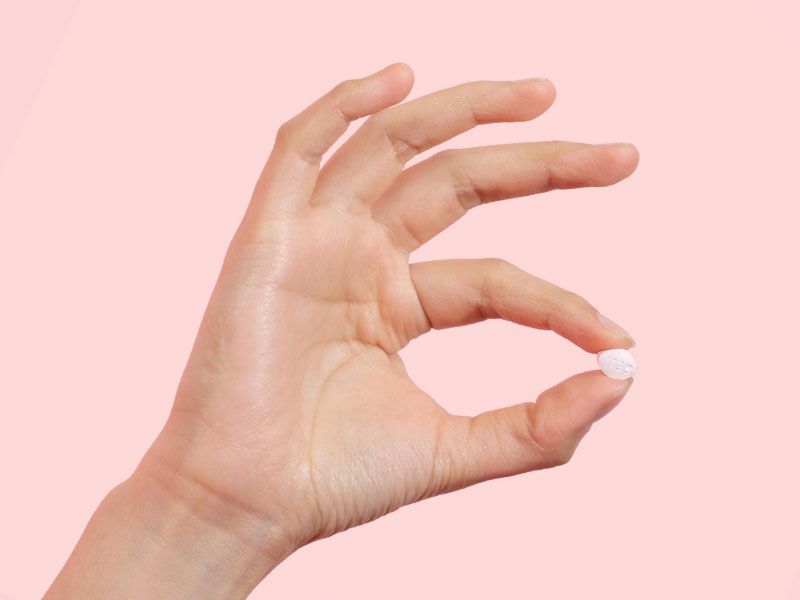
Foods To Eat & Avoid With A Yeast Infection
By Brandy Winfree, MBA, RDN, CSR, LDN
April 25, 2024
Written by Brandy Winfree, MBA, RDN, CSR, LDN
Medically Reviewed by Andrea Sleeth WHNP-BC, MSCP
Did you know that some foods can help support your vaginal health?
Yeast infections happen when Candida, a natural fungus in your body, grows out of balance. But with a few simple tweaks to your diet, you can help keep your body strong and resilient.
Foods like probiotic-rich yogurt or sauerkraut, garlic, and coconut oil are all great choices. They’re not just tasty—they’re also supportive of a healthy diet and your overall wellness. Adding these foods to your meals can help create a healthier environment down there, making it easier to stay comfortable and confident.
Here’s the low-down on the best diet for a happy vaginal flora.
What are Yeast Infections?
Yeast infections are super uncomfortable and frustrating, we know. They happen when Candida, a naturally occurring fungus in your body, starts multiplying more than usual, and starts making itself unwelcome.
When this happens, it can lead to symptoms like itching, burning, and unusual discharge, whether in the genital area, mouth, or intestines. When everything is in balance, Candida stays in check, and your body functions smoothly. But sometimes, things like hormone changes, antibiotics, or a weakened immune system can cause that balance to tip.
Symptoms of yeast infections include:
- Vaginal yeast infections: Swelling, redness, that dreaded itch, and thick or abnormal discharge.
- Oral thrush: White patches in the mouth, on the tongue or cheeks.
These signs might seem small at first, but catching them early can help keep them from getting worse.
What is the Candida diet?
The Candida diet is all about cutting out sugar, refined carbs, and processed foods that can feed harmful yeast in your body. Instead, it encourages eating whole foods like veggies, lean proteins, and healthy fats.
Focusing on whole, anti-inflammatory foods and probiotics assist with maintaining balance in the body’s natural flora which can, in turn, help support vaginal health.
However, there is limited research when it comes to the Candida diet, so keep in mind that just because these foods may be helpful for some, they may not be right for you and your delicate flora.
The Role of Diet in Your Vaginal Health
What you eat can have a bigger impact on your body than you might think, especially when it comes to balancing yeast. Foods that cause blood sugar to spike can sometimes give Candida the perfect environment to grow.
That’s why so many experts recommend focusing on balanced meals that include protein, healthy fats, and complex carbs—think of it as giving your body high-quality fuel to keep everything running smoothly. Refined carbs, like white bread and pastries, on the other hand, might make it easier for yeast to thrive.
Here are some diet tips to keep things balanced and feeling good:
- Focus on balanced meals: Include protein, healthy fats, and complex carbs—fueling your body with the good stuff.
- Limit refined carbs: White bread, pastries, and sugary snacks might encourage yeast growth. Try cutting back and replacing them with healthier (but still tasty) options.
- Add fiber-rich foods: Whole grains, beans, and vegetables help keep your gut bacteria steady, making it harder for Candida to thrive.
- Choose low-sugar dairy: Probiotic-rich foods like live-culture yogurt and kefir can support healthy bacteria. Opt for versions without added sugars or artificial ingredients.
It’s also important to remember that lifestyle factors play a big role in how the body handles yeast. Drinking plenty of water, staying active, and getting enough rest all support your immune system and overall health. These habits, along with a thoughtful eating plan, create a healthy environment that makes it easier to feel your best.
Small changes can add up over time—like swapping sugary sodas for water or grabbing a plain yogurt with live cultures. It’s all about finding that sweet spot where you feel good, inside and out.
Top Foods to Help Support Your Vaginal Health
When it comes to keeping things in balance down there, some foods naturally make a great team for your body. Things like fermented foods and apple cider vinegar are popular picks—and for good reason! They’re easy to work into your meals and can be a helpful part of maintaining a balanced environment in your body.
Let’s take a look at some foods that are often praised for their potential to support vaginal health:
Yogurt
Yogurt with live active cultures is a superstar when it comes to adding good bacteria to your diet. These probiotics can help your gut and vaginal microbiome stay balanced, which can make it harder for yeast to throw a party. Reach for unsweetened, plain yogurt and enjoy it as a snack, as a breakfast base, or even in smoothies.
Kimchi and sauerkraut
These fermented veggies aren’t just trendy—they’re packed with probiotics that your gut (and vagina) will love. Add them to salads, grain bowls, or serve as a flavorful side. Just make sure you're getting unpasteurized versions so the live cultures are still kicking.
Kefir
Kefir is like yogurt’s tangier, drinkable cousin. It’s full of diverse probiotic strains that can help support your microbial balance and have you feeling good all over. Pour it into smoothies, drink it straight, or use it in overnight oats for an easy gut-friendly boost.
Cranberries
Cranberries aren’t just good for your bladder—they could also support a healthy microbiome. These tart powerhouses contain natural compounds that may help support vaginal health. Try tossing them into a salad, blending them into a smoothie, or sipping on unsweetened cranberry juice (bonus points for skipping the added sugar).
Apple cider vinegar
Apple cider vinegar is rich in acetic acid, which may help keep certain microbes in check. This is why it’s often recommended in the Candida diet. A tablespoon mixed with water or drizzled over your salad can be a tasty, simple addition to your daily routine. Make sure to go for the unfiltered version for the best benefits!
Keep in mind
While these foods are great additions to your diet, it’s important to remember that no single food is a magic fix. A healthy, balanced diet can help keep your body in a good place, but if you’re facing an issue like a yeast infection, it might be best to reach out to a doctor. They’ll be able to help you decide between a prescription yeast infection treatment, an over-the-counter antifungal cream, or something else to get it sorted out quickly.
Wisp treatment options are available only after consultation with a licensed medical professional. You should consult with your healthcare provider before starting a new supplement or treatment regimen. Individual results may vary.
How to Add These Friendly-bacteria Foods into Your Diet
Supporting your vaginal health through food doesn’t have to mean a full kitchen overhaul. It’s all about making easy, feel-good choices that slide naturally into your day-to-day. Here’s how to work these microbiome-loving foods into your meals without the stress:
- Start with yogurt: Yogurt is a classic when it comes to supporting your gut and vaginal health. Add a scoop of plain yogurt to your breakfast bowl, mix it into smoothies, or enjoy it as a snack. Look for unsweetened options to skip the added sugars!
- Blend in some kefir: Kefir offers a boost of probiotics to support your health. Add it to smoothies for a creamy texture or sip it on its own for a tangy treat. It’s super easy to get in a daily dose!
- Dig into kimchi: Kimchi, a fermented vegetable dish, is rich in probiotics and can work wonders for your gut and vaginal biome. It adds a spicy, tangy kick to any meal. Toss it into salads, top your tacos with it, or pair it with rice and veggies. A little goes a long way!
- Try sauerkraut: Sauerkraut is another delicious fermented food that helps nourish your microbiome. It's perfect for topping off sandwiches, mixing into salads, or serving as a side to your favorite meals. Plus, it’s a great way to add some crunch and flavor to your dishes!
- Add apple cider vinegar: A splash of unfiltered apple cider vinegar can do more than wake up your taste buds. Mix it into salad dressings, drizzle it over roasted veggies, or stir a tablespoon into a glass of water with lemon for a tangy start to your morning. It’s simple, versatile, and supports your body in all the right ways.
- Toss in some cranberries: Cranberries are full of natural compounds that can support a healthy body. Try adding unsweetened dried cranberries to your oatmeal, blending a handful of fresh ones into a smoothie, or sipping on unsweetened cranberry juice. They're tart, tasty, and totally worth keeping on hand.
Foods to be Mindful of with a Yeast Infection
When it comes to keeping things in balance down there, some foods might make it easier for yeast to thrive. It’s all about being mindful of what you're fueling your body with. Here are a few foods that are known to encourage yeast growth, and keeping an eye on them can help you feel more comfortable while supporting your health.
Sugary foods: Foods that are loaded with sugar—like candy, soda, and sweet baked goods—can create a friendly environment for yeast to thrive. Since yeast feeds on sugar, it’s best to scale back on these sweet treats when you’re looking to maintain a balanced body. Even artificial sweeteners aren't a great choice. If you're hunting for a sweet snack, opt for low-sugar fruits and fruit juice instead.
Refined carbs: White bread, pasta, and other refined carbs can quickly turn into sugar once digested. This can give yeast a little more fuel than it needs. Swapping these for whole grains or other fiber-rich options can be a great move for your overall health!
Alcohol: Alcohol can sometimes be a bit of a troublemaker. It often contains sugar or turns into sugar after it’s broken down by your body, which can throw off your gut bacteria and make it harder to maintain balance. Whether it's beer, wine, or mixed drinks, these drinks can sometimes cause bloating or discomfort—especially if yeast is already hanging around. Limiting or skipping alcohol while you're working on balance can make a big difference.
Sweetened dairy: Sweetened dairy products, like flavored yogurts and ice cream, can pack in a lot of sugar. And processed cheese can introduce additives that aren't the best for gut health. If you're craving dairy, unsweetened, plain yogurt with live cultures can be a better option, as it helps support a healthier balance of bacteria.
Starchy vegetables: Veggies like potatoes and corn are high in starch, which breaks down into sugar in the body. While small amounts are totally fine, larger portions might not be ideal if you're trying to maintain balance. Keeping an eye on portion sizes and switching it up with non-starchy veggies is a smart choice.
You don’t need to cut out all of these foods altogether. Just be mindful of how they might affect your body! Small changes, like swapping a sugary soda for sparkling water or choosing whole grains over white pasta, can go a long way. The key is creating a diet that works for you and keeps you feeling your best.
Remember, every body is different, so it's all about finding what feels right for you and supporting your vaginal health in a way that makes sense for your life!
Lifestyle tweaks to support vaginal health
When it comes to supporting vaginal health, it’s not just about the foods you eat—though those are definitely important! It’s also about the small, everyday habits that can help create a healthy balance.
Keep things fresh
Washing delicate areas with a mild, unscented soap is key. You want to keep that natural balance in place, so avoid harsh scrubbing or heavily scented products that can throw things off.
After a swim, shower, or workout, rinse thoroughly and make sure to dry off well. A gentle pat instead of a rub is a great way to avoid irritation or tiny nicks where yeast might want to hang out.
Choose clothes that let you breathe
Your body loves to breathe, and so does your vagina! Clothes made of breathable fabrics like cotton allow air to flow and sweat to evaporate, keeping you comfortable and dry. Tight clothes or synthetic fabrics, on the other hand, can trap moisture and heat, which yeast loves. Try swapping those out for looser, more breathable options and moisture-wicking underwear to help keep things cool and comfy.
Manage stress and get enough sleep
Stress and lack of sleep can throw your body’s balance off, making it harder for your immune system to keep things in check. Simple relaxation techniques, like going for a calm walk or practicing deep breathing, can help reduce stress.
Aim for seven to eight hours of quality sleep each night, and try to keep a regular sleep schedule. Consistent rest helps your body stay strong and ready to tackle anything that comes its way.
Eat right, because yeast belongs in bread
Making a few small tweaks to your daily meals and habits can go a long way in supporting a healthy balance downstairs.
Swapping sugary snacks for nutrient-packed foods and choosing breathable clothing are just a couple of simple changes to help you feel comfortable and confident. Listening to your body and noticing early signs—like a little itching or changes in discharge—can help you catch things early and avoid issues you don’t want to be dealing with.
At Wisp, we’re here for you with accessible, private, and supportive reproductive healthcare that’s tailored to your unique needs. A little extra guidance can make all the difference, and we’re ready to help however we can.
Frequently asked questions (FAQ):
What are the best foods to eat to get rid of a yeast infection?
Foods with probiotics, like plain yogurt or kefir, plus antifungal ingredients can all be great additions to your diet. Fiber-rich meals can also support gut health, which helps maintain balance down there.
What helps kill yeast in the body?
Probiotics found in fermented foods or supplements can help balance out bacteria, which in turn supports a healthy vaginal environment. Also, cutting back on sugar can help by limiting the fuel that yeast loves to feed on.
What feeds yeast in the body?
Yeast thrives on sugar, so foods high in sweets, refined carbs, and certain starchy veggies can fuel its growth. Cutting back on sugary treats and drinks can help keep things in check.
This blog post is for informational and educational purposes only and should not be taken as professional advice. Always consult with a qualified professional before making any decisions based on the information provided here.

Diflucan, Generic Fluconazole (Yeast Antifungals)
Prescription antifungals used to treat vaginal yeast infections
Starting at $45.00
Get Started
Vaginal Health Consult
Private, online vaginal health consultation.
One Time Consult $45.00
Get Started

